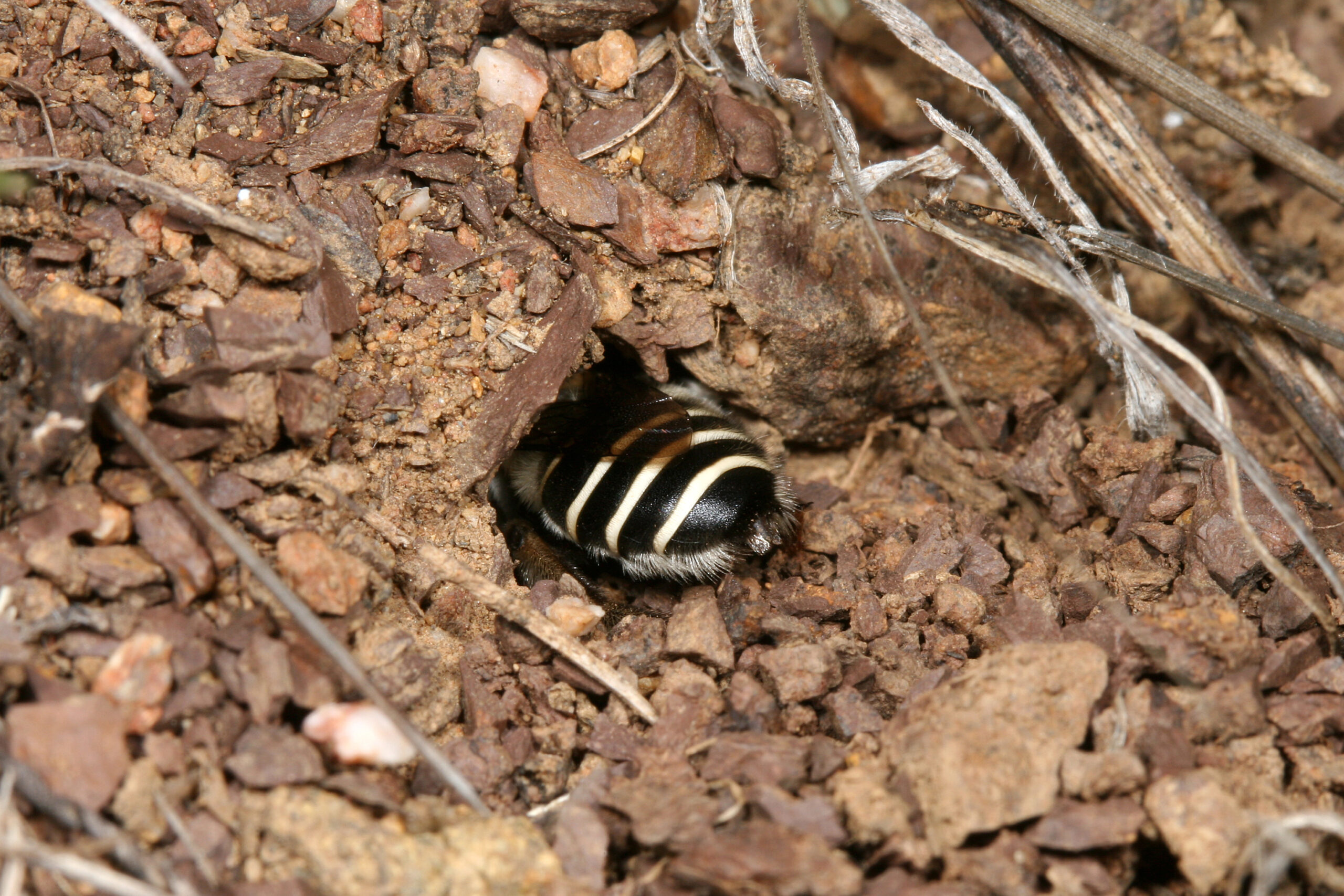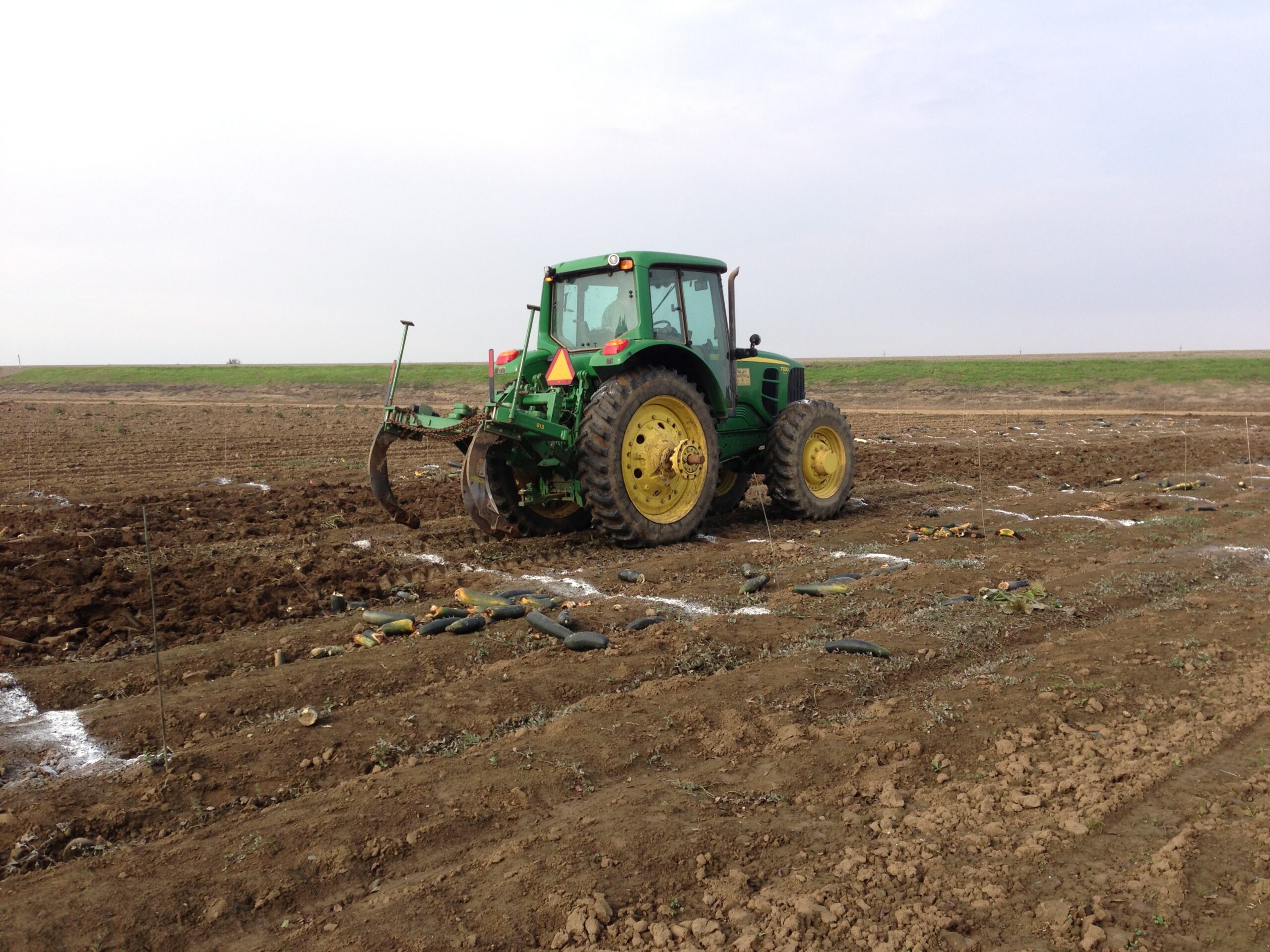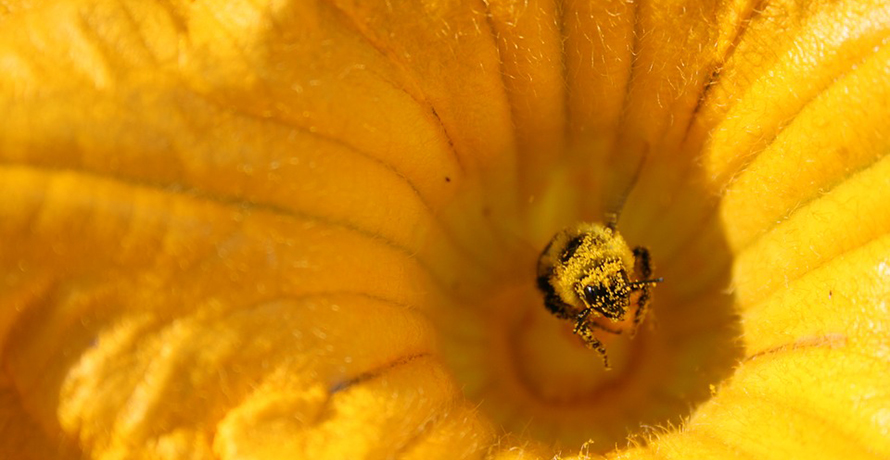Roughly 70% of wild, native bees nest below-ground – in North America, that’s about 2,500 species of bees! On farms, ground-nesters can be found nesting in active crop fields, fallow fields, orchard floors, dirt roads, irrigation canals, wildflower plantings, below hedgerows, and in nearby natural areas. Because bees nest in the ground in and around crop fields, they can be affected by practices that disturb the soil, like tillage.
Ground-nesters spend the majority of their life developing below the soil surface in nest cells that their mother excavated for them. They are particularly vulnerable at this stage because they cannot move.

Some ground nesting bees nest in aggregations such as this one pictured above. Photo: Katharina Ullman (Xerces Society)
Different species of bees nest at different depths below the soil-surface, but most nest cells are located between 6 and 16 inches deep – which can be well within the tillage zone. Deep tillage can lead to mortality of bee offspring in their underground nests. Take the example of the squash bee, a specialist bee that only visits squash plants and prefers to nest right at the base of the plants. A study by the University of California, Davis found that tilling squash fields after harvest up to 16 inches deep caused roughly 50% fewer bee offspring to emerge the following year. Practicing shallow tillage (less than 4 inches) or no-till practices can reduce the risk of killing developing bee larvae when working fields.

A ground nesting bee (Anthophora spp) at nest entrance. Photo: Rollin Coville
Other ways to reduce the impact of tillage is to alter how frequently you till. By reducing the overall amount of times a field is tilled it is possible to decrease the chance of hitting bee larvae developing below the soil surface. Altering the timing of tillage can also have a positive impact. Tilling in the spring or summer when mothers are actively building nests can allow adult bees to alter their nest location to somewhere less disturbed. Conversely, tilling in the late summer and early fall when offspring are developing in their cells and adult bees have ceased their nest-building activities, nests locations are already set and the young bees within them are more vulnerable.
Changing the type of equipment used can also change the risk posed to below-ground nesting bees. Equipment that greatly disturbs the soil, such as mould board ploughs, is more likely to disturb nest sites than equipment that minimizes soil disturbance, like speed tillers or blade ploughs, that only disrupt the surface of the soil while leaving deeper soil unaffected.

Tillage practices can have a great impact on ground nesting bees, and are an important piece of the Bee Better Production Standards. Photo: Katharina Ullman (Xerces Society)
Another strategy that can benefit ground-nesting bees is to till only a portion of a field in a given year, allowing the other section to “rest”. This allows any bees nesting there to fully develop. Because many bees nest in fields with an abundance of flowers–like sunflower fields–you can select to limit tillage in fields with many blooms for a year after the attractive crop was planted. This gives bees deposited in nests the previous season time to emerge and find new fields where they can build nests for the next generation of crop pollinators.
How Bee Better Certified supports below-ground nesters
Bee Better Certified aims to reduce potential risks tillage poses to ground-nesters by requiring growers to develop a Standard Operating Practice (SOP) that addresses at least two of the factors discussed above: tillage depth, timing of tillage, frequency of tillage, equipment type, and location of tillage (Standard 1.4).

